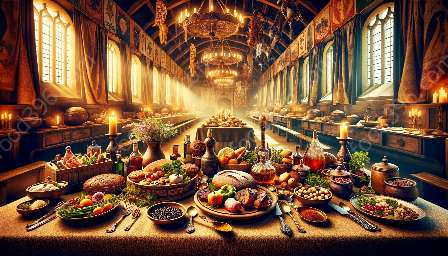Medieval cuisine was influenced by a variety of social and cultural factors, including the availability of ingredients, religious beliefs, social hierarchy, and trade routes. These influences shaped the types of foods that were consumed, the cooking methods used, and the dining customs of the time. Understanding the social and cultural influences on medieval cuisine provides valuable insights into the historical, culinary, and societal aspects of this fascinating period.
Medieval Cuisine History
The history of medieval cuisine is intertwined with the broader historical developments of the Middle Ages. This period, lasting from the 5th to the 15th century, saw significant changes in European society, including the rise of feudalism, the spread of Christianity, and the expansion of trade and commerce. As a result, medieval cuisine evolved in response to these social and cultural transformations, reflecting the values, beliefs, and practices of the time.
Cuisine History
The history of cuisine encompasses the development of food and culinary practices across various time periods and cultures. By examining the social and cultural influences on medieval cuisine, we can gain a deeper understanding of how historical, geographical, and social factors have shaped culinary traditions throughout history.
Social and Cultural Influences on Medieval Cuisine
1. Availability of Ingredients: The availability of ingredients played a crucial role in shaping medieval cuisine. People relied on locally grown produce, such as grains, vegetables, fruits, and herbs, as well as domesticated animals for meat, dairy, and eggs. This limited access to a diverse range of foodstuffs, resulting in a reliance on staple foods and seasonal variations in the diet.
2. Religious Beliefs: Religious beliefs, particularly Christianity, had a profound impact on medieval cuisine. The Church prescribed fasting periods and dietary restrictions, leading to the development of specific fasting foods and culinary customs. The religious calendar influenced the timing of feasts and celebrations, contributing to the development of certain traditional dishes and festive food practices.
3. Social Hierarchy: The social hierarchy of medieval society influenced the types of foods consumed by different social classes. Nobles and royalty had access to a wider variety of luxury ingredients and elaborate dishes, while the peasantry relied on simpler, more frugal fare. The culinary preferences of the upper classes often influenced the evolution of culinary techniques and the refinement of dining etiquette.
4. Trade Routes: The expansion of trade routes during the Middle Ages facilitated the exchange of ingredients, spices, and culinary knowledge between different regions. The introduction of new foods, such as spices, sugar, and exotic fruits, enriched medieval cuisine and contributed to the development of fusion dishes that combined local and foreign ingredients.
Culinary Traditions and Practices
The social and cultural influences on medieval cuisine gave rise to distinct culinary traditions and practices that varied across different regions and social strata. The development of cooking methods, preservation techniques, and communal dining rituals reflected the values and customs of medieval society. Understanding these culinary traditions provides valuable insights into the daily lives and cultural heritage of medieval communities.
Conclusion
Exploring the social and cultural influences on medieval cuisine offers a window into the historical, culinary, and societal aspects of the Middle Ages. By examining the availability of ingredients, religious beliefs, social hierarchy, and trade routes, we can gain a deeper appreciation for the diverse culinary traditions that emerged during this fascinating period. The legacy of medieval cuisine continues to influence contemporary culinary practices and provides a rich tapestry of flavors, techniques, and traditions that reflect the enduring impact of social and cultural influences on food and dining.

